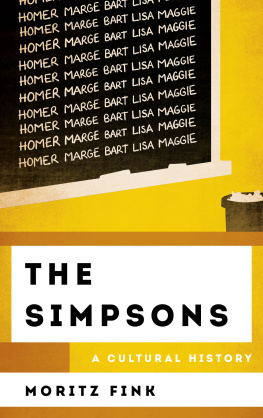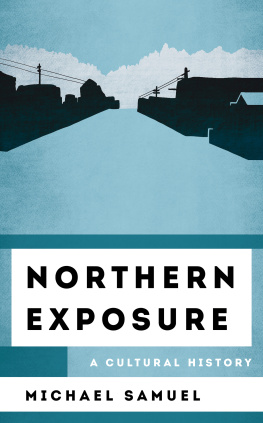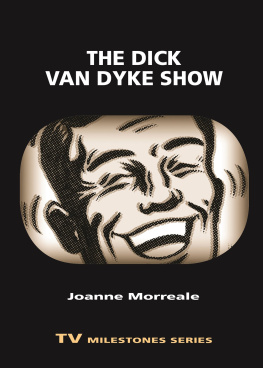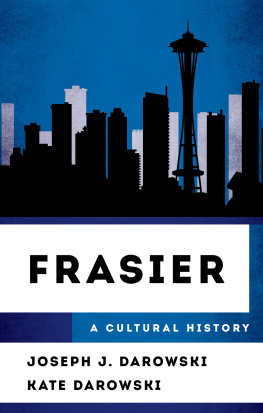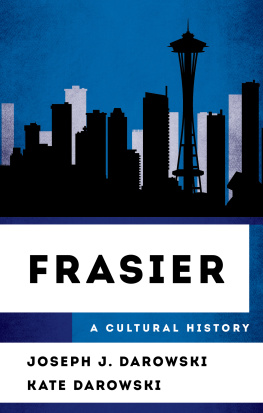Table of Contents
Guide
Page List
Acknowledgments
Douglas L. Howard: I thank all of the authors for their inspired contributions to this collection as well as for their patience through this rather lengthy process. I am so grateful to have had the opportunity to work with such talented writers and accomplished scholars and to bring them together for this book.
Thanks to David Bianculli for so many interesting discussions about beginnings and endings on television and for his keen insights into the scope of this project.
Thanks to Lynnette Porter, a true inspiration, for her contributions to this book as well as to popular-culture studies in general.
Thanks as well to my colleagues at Suffolk County Community College for their collegiality and friendship and for giving me the opportunity to take part in this project. I would particularly like to recognize the members of the English Department on the Ammerman campus for all of their suggestions and conversations about the book; the faculty and staff in the Huntington Library, who helped out with research questions and interlibrary loans; and the college administration for seeing the value of this work and giving me the time to do it.
Thanks to Deborah Manion and Bob Thompson at Syracuse University Press for their continued enthusiasm and support for this project.
Thanks to Annie Barva for her incredible editorial work.
Thanks to my good friend Pat Tierney, Fugitive fan and TV buff, for more than thirty years of conversations about the good, the bad, and the ridiculous on the small screen as well as for many recent conversations about this collection. I have no doubt that he could beat Lieutenant Gerard in a footrace.
Thanks to my family for all of their love and support. Thanks in particular to Jennifer and Carolyn for all of those iced teas that kept me awake and car-ride conversations that kept me sane and to Ginger and Olive, who often sat next to me while I edited.
And, finally, thanks to the late David Lavery for asking me to be a part of this book and for putting out a call for papers on The Sopranos many years ago that changed my life.
David Bianculli: Thanks to the late David Lavery for starting this ball rolling. And thanks to Douglas Howard for carrying it, and me, over the goal line.
Select titles in Television and Popular Culture
Bigger Than Ben-Hur: The Book, Its Adaptations, and Their Audiences
Barbara Ryan and Milette Shamir, eds.
Captain America, Masculinity, and Violence: The Evolution of a National Icon
J. Richard Stevens
Inside the TV Writers Room: Practical Advice for Succeeding in Television
Lawrence Meyers, ed.
Reading Joss Whedon
Rhonda V. Wilcox, Tanya R. Cochran, Cynthea Masson, and David Lavery, eds.
Screwball Television: Critical Perspectives onGilmore Girls
David Scott Diffrient and David Lavery, eds.
TV on Strike: Why Hollywood Went to War over the Internet
Cynthia Littleton
Watching TV: Eight Decades of American Television, Third Edition
Harry Castleman and Walter J. Podrazik
Watching TV with a Linguist
Kristy Beers Fgersten, ed.
As the World Turns
Season 52, Episode 181 (or 13,858)
SAM FORD
For almost all types of fictional television series, the finale is an inevitable conclusion, one that the producers and the viewers alike are often working toward from the first seconds of the premiere episode. Not so with the US soap opera. Soaps are commonly referred to as worlds without end (Museum 1997), predicated upon the impossibility of closure (Allen 1985, 13). Even more emphatically, Tania Modleski writes, It is not only that successful soap operas do not end, it is also that they cannot end (1979, 12).
The finale of a US soap, then, is a particularly complicated narrative momenta final text destined to be unsatisfactory, created by a production team whose career has built around avoiding such moments and engaged with by an audience whose pleasures in viewing have been shaped by the idea that such a moment would not come.
There is perhaps no better finale to illustrate these tensions than the last installment, episode 13,858, of the lives of the residents of Oakdale, Illinois, on CBSs long-running soap opera As the World Turns (ATWT).
Although this iconic daytime drama proved impossible to end satisfactorily, the storytelling model of ATWT initially proved difficult to begin as well. With the shows debut, series creator Irna Phillips took an approach to the soap opera that focused on character over plot. Typical scenes in early episodes involved couples, relatives, and friends talking in living rooms, kitchens, and bedrooms. Very little happened in the average scene. As Robert LaGuardia puts it, The activities on As the World Turns were very, very slow (1983, 105). Before launching, Phillips got Proctor & Gamble to agree not to cancel the show for its first yeara prescient move because that slow storytelling style took significant time to begin picking up viewers but then gained momentum rapidly, catapulting from the low ratings of its first year to being the top-rated soap by the end of its second year on air (LaGuardia 1983, 106).
And ATWT was the exemplar US soap in all sorts of respects. It was the first soap opera, with its debut in 1956, to expand beyond fifteen-minute daily episodes (beating The Edge of Night [195684], which also debuted the same day at thirty minutes, by a time slot or so). It was the highest-rated soap for twenty years, from 1958 to 1978, at the height of the genres popularity. Its finale marked the end of the true soap opera in that it was the last daytime drama still being produced by an actual soap company (Procter & Gamble). And it was the fullest realization of the vision of the mother of the soap opera genre, Irna Phillips. As the Museum of Television and Radio describes its influence, The conversations over cups of coffee, recaps of previous events, pregnant pauses, and long close-ups preceding fade-out that were introduced on As the World Turns are all clichs now, but at the time they were the strikingly original building blocks of Phillipss new, visual style of soap-opera storytelling (1997, 132).

By 2010, longtime viewers had watched hundreds, if not thousands, of actors pass through Oakdaleas well as the twists and turns of multiple generations of characters. In some cases, a host of actors had taken their pass at the same role. (For instance, thirteen different actors were billed as playing Tom Hughes [Ford 2011]). And ATWT, like all its daytime sisters, had been an early stop in the careers of various film and TV starsfor instance, Martin Sheen, James Earl Jones, Dana Delany, Meg Ryan, Marisa Tomei, Courteney Cox, Stephen Weber, William Fichtner, Ming-Na, Parker Posey, Jason Biggs, James Van Der Beek, and Julianne Moore.
Through those characters and their stories, ATWT also tackled many contemporary concerns and social issues throughout its fifty-four yearsdivorce, rape (in particular marital rape), incest, interracial marriage between white and black characters, an interracial child fathered in Vietnam by an American soldier, the first gay male character in daytime TV, the first gay male kiss on daytime TV, end-of-life family tensions, miscarriages, cancer, Alzheimers, HIV/AIDS, and a wide range of other social issue stories.
More powerfully, ATWT had retained its history more completely than those other daytime dramas. In the final year before its cancellation in 2010, the series could boast in its ensemble an actor who had debuted on the premiere episode in 1956 (Helen Wagner); four actors who had started with the show in the 1960s (Don Hastings, Eileen Fulton, Marie Masters, and Larry Bryggman); two actors whose run had begun in the 1970s (Kathryn Hays and Colleen Zenk); and a range of others whose faces first appeared in Oakdale in the 1980s, 1990s, and early 2000s.



